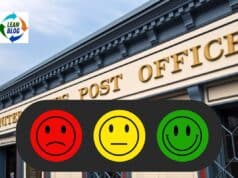I can certainly see the appeal in electronic kanban. If you have a truck that comes to your plant twice a week and you're sending physical kanban cards back to the supplier, that transportation time of the truck back to the supplier has to be included in the kanban lead time. If you can cut that kanban lead time, that means fewer kanban cards/containers and less inventory in the system. Faxes can be problematic for the reasons mentioned in this press release (faxes get lost, are time consuming, aren't easily confirmed, etc.). Do any of you have experience with software based kanban solutions? I've heard anecdotally that Toyota uses an electronic kanban solution (I suspect it's homegrown).
Please scroll down (or click) to post a comment. Connect with me on LinkedIn.
Let’s build a culture of continuous improvement and psychological safety—together. If you're a leader aiming for lasting change (not just more projects), I help organizations:
- Engage people at all levels in sustainable improvement
- Shift from fear of mistakes to learning from them
- Apply Lean thinking in practical, people-centered ways
Interested in coaching or a keynote talk? Let’s talk.
Join me for a Lean Healthcare Accelerator Trip to Japan! Learn More










Check out http://www.synchrono.com – the entire system focuses on placing work priority in front of the user based on real-time scheduling and workflow movement through the plant. Kanbans are not physically generated in this case.
RE: Kanban vs. FAXban vs. e-Kanban: Fascinating topic. I asked a couple of my Affiliates about this, and thought you may find their responses of interest.
From Joe Colarusso:
I still recommend & implement physical kanbans for my clients. I have direct experience in this area with a client who I had set up with a physical system. They went to e-kanbans after a system’s conversion and it was a disaster. They have since switched back to physical kanbans.
From Joe Swartz:
I think it really depends.
So many IT projects get designed by people who don’t adequately understand how to create a world class process and who don’t have to live in the process they create. The nice thing about paper and physical items is that it gives those who understand how to create a world class process and those who live in the process the tools to control the creation and therefore allow them to create the best process.
On the other hand, I’ve seen some marvelous IT systems designed when people are involved who understand how to create world class processes, who really listen to the customer requirements, and who create IT systems flexible to change.
The disadvantages of paper are the productivity losses from physical handling, and the errors caused by misplacement or lost papers. The advantages are the flexibility and control that it allows.
The disadvantages of e-Kanban systems are the cost of designing and implementing the system, and the inflexibility of the system once designed. The advantages of e-Kanban are the productivity gains by automating the handling, and less misplacement errors.
One additional consideration. The real power of going electronic is if the computer can do some thinking for you. If it can be constantly checking for abnormalities, then you’ve gained a level of error proofing sophistication. This goes a bit beyond strictly e-Kanban and gets into Jidoka.
I was involved in a project where we went electronic and the largest benefit was the error checking that we put into the system. The system was well received by those who work in the process because we got key people in the shop floor process involved in designing the system. We spent adequate time in upfront requirements analysis. We had expertise on the team about what a world-class process should look like and what it should do.
RE: Kanban vs. FAXban vs. e-Kanban. Comments by another Affiliate of ours, Erik Hager:
Mark, first thanks for involving me in the sharing of experiences between us. We used a similar learning tool while I was with TSSC. I would appreciate the continued sharing of ideas from all of you.
The main purpose of Kanban is to create the Need for Kaizen. With regard to Toyota’s use of kanban, as Joe says, “it depends”. Visual Management: It should be immediately obvious to TM or TL, that there is an abnormality in Info Flow (missing or too many kanbans / Info) or Material Flow (too few or too many kanbans / info).
Within the Assembly department of TMMC, TMMK or NUMMI, there are thousands of parts and assemblies that must be put on the right vehicles. With container quantities as low as one and Takt times, or pace of usage as low as every fifty-four seconds, there are tens of thousands of parts and thousands of kanbans being handled and processed every pitch (TMMC’s pitch was forty-two minutes: twelve kanban collection times per shift).
Toyota uses both actual count of kanbans, and an in-house developed software program that calculates theoretical usage based on the build sequence, determined once shipped from Paint. There is a reflection by the program between theoretical and actual kanban quantity usage, and an exception report is created each pitch. The TL and GL of Conveyance must then investigate the root cause of the discrepancy.
Because Assembly TM’s and TL’s handle the parts and therefore, understand the rate of their usage, they know why more or less parts / kanbans were used than usual (scrap, repairs, wrong parts, part prep, overproduction, lost / missing kanbans, etc.). Assembly TM’s pull the kanbans, when the first part is used and place the kanban in the lineside child post, TL’s every pitch hear an announcement and collect the Child Post kanbans and either count, weigh or measure against a standard, how many kanbans should have been pulled during that pitch and place them in the Mother Post.
Problem consciousness and Kaizen can happen real time because of kanban handling rules and the observation / involvement of TM’s and TL’s. It’s important to understand that Toyota uses many different kinds of tools to connect the (pull information flow) between separated processes / plants: golf balls, coloured washers, empty spaces, signal kanbans, katashiki, fax machines, EDI.
Time lapsed between finding an abnormality and taking action to fix the abnormality must always be considered when deciding whether to automate information flow. Will you increase or decrease the combined consciousness of the organization when an abnormality exists?
Finally, before deciding on the type of Kanban to use, make sure that you have taken advantage of the opportunities you have to create a longer Value Stream of Continuous Flow.
You may be able to make the information flow a moot point.
Thanks,
Erik Hager
Comments are closed.